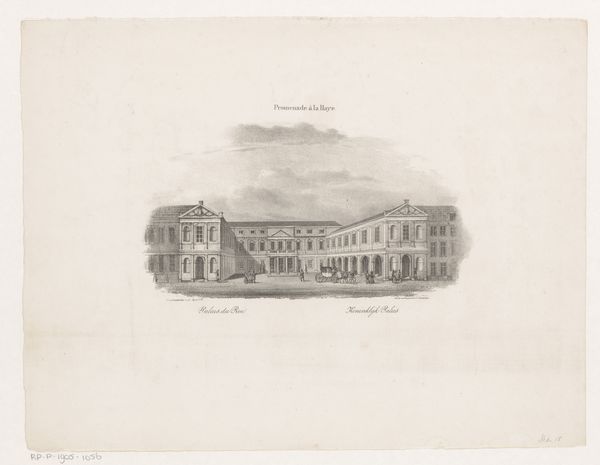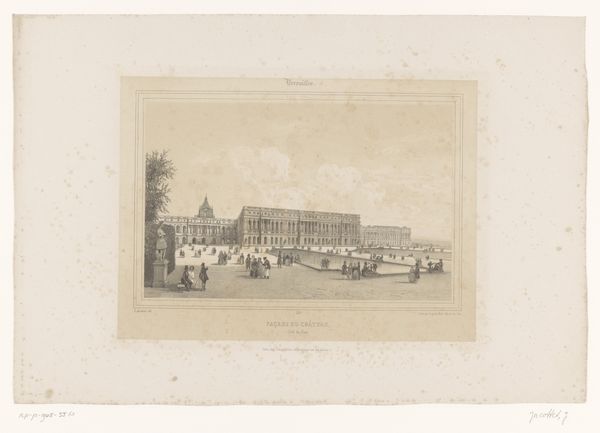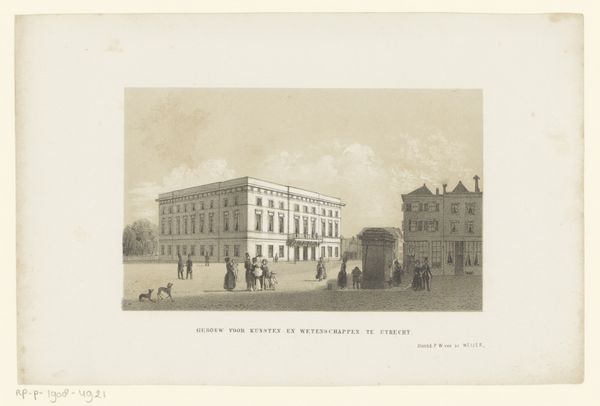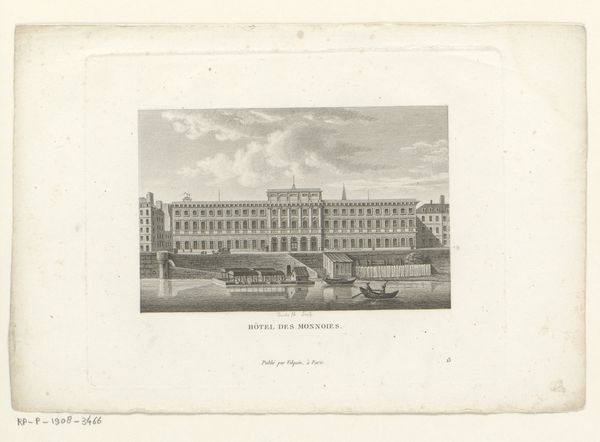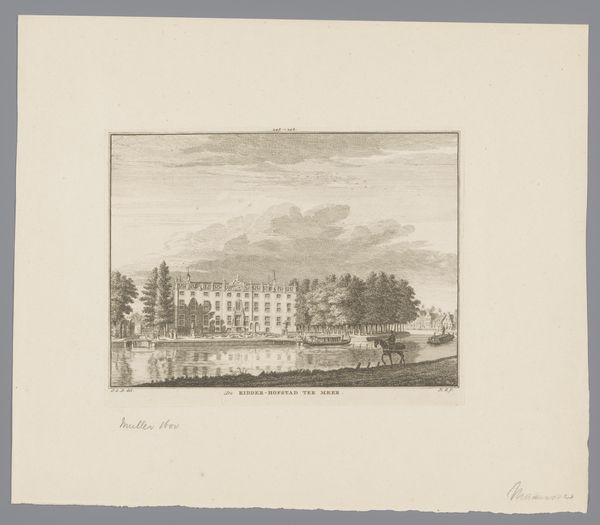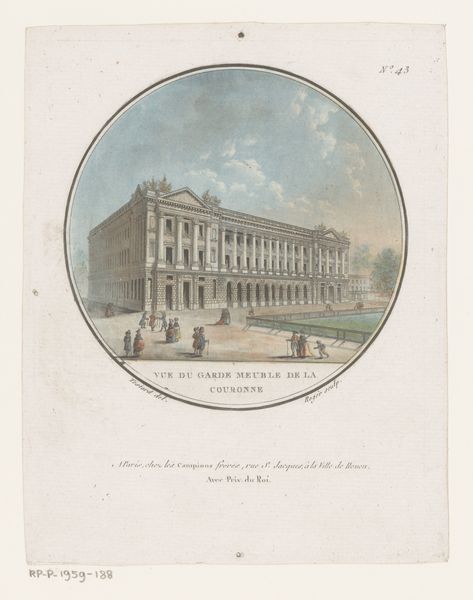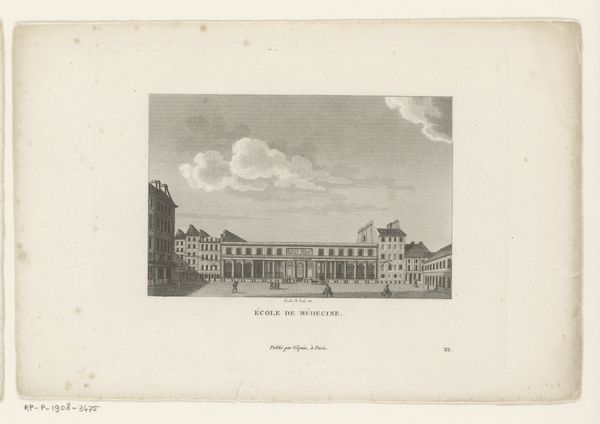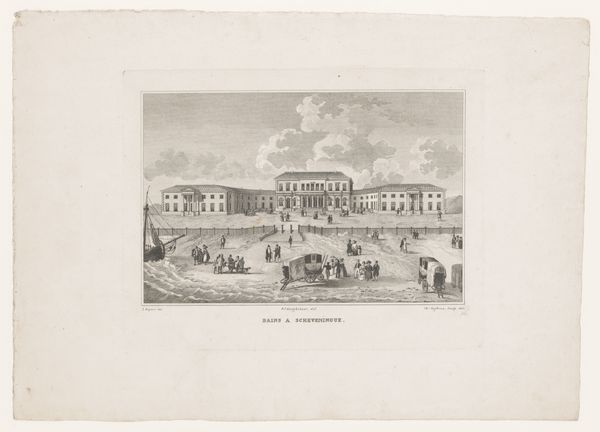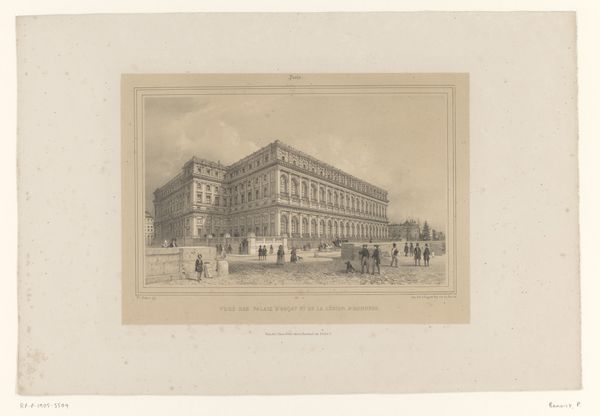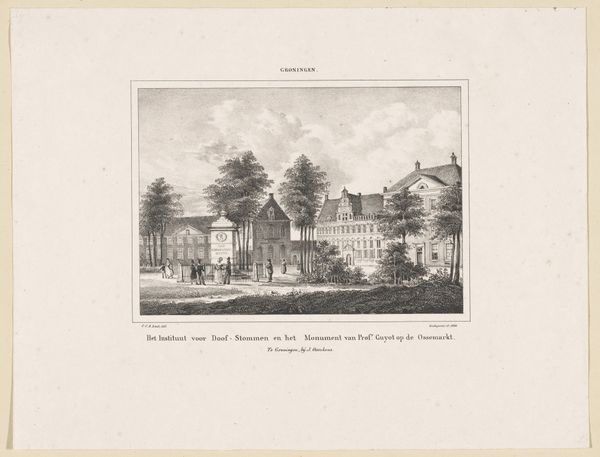
Ontwerp voor Academiegebouw Universiteit Leiden c. 1881 - 1882
0:00
0:00
drawing, paper, architecture
#
drawing
#
neoclassicism
#
paper
#
cityscape
#
academic-art
#
architecture
#
realism
Dimensions: height 295 mm, width 400 mm, height 355 mm, width 440 mm
Copyright: Rijks Museum: Open Domain
Editor: This is "Ontwerp voor Academiegebouw Universiteit Leiden," a drawing on paper from around 1881-1882, housed in the Rijksmuseum, and attributed to Adrianus Martinus Visser. The building appears very symmetrical and orderly, and seems to fit in nicely with the natural surroundings. How do you interpret this work? Curator: I see it as a visualization of power and knowledge through architecture. Neoclassicism, with its emphasis on symmetry and order, was often used to legitimize institutions. How does the depiction of the figures in the foreground affect your reading of the building? Editor: They look pretty small compared to the building itself, which makes the university seem even grander and more imposing. It's interesting how that sense of scale influences perception. Curator: Exactly. And consider the 'Academia Lugduno-Batava' inscription; this invokes a classical heritage, situating Leiden University within a specific lineage of intellectual authority. How might that historical context shape its identity, especially in the face of evolving social landscapes? Editor: So, it's not just a picture of a building. It represents a specific ideology about the role of education and power in society? Curator: Precisely! These drawings also provide invaluable insight into societal structures, as expressed through cultural projects like higher education. It makes me question the narratives these spaces perpetuate. Editor: I had not considered the connection to social structures before. This gives me a much deeper appreciation for the work! Curator: Right? Considering a building in its time offers much deeper insight.
Comments
No comments
Be the first to comment and join the conversation on the ultimate creative platform.

